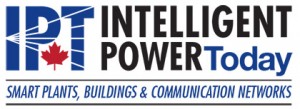Cybersecurity Threats and Mitigation Strategies: Securing Switchgear in a Connected Grid Environment
The increasing reliance on digital technologies for power grid operations introduces a growing concern: cybersecurity threats. As switchgear becomes more sophisticated and integrates with control systems, it becomes a potential target for cyberattacks. A successful cyberattack on critical grid infrastructure like switchgear can have devastating consequences, leading to widespread power outages, economic disruption, and even public safety risks. This article explores the cybersecurity challenges associated with connected switchgear and discusses mitigation strategies to enhance security and safeguard the power grid.
Understanding the Cybersecurity Risks
The integration of digital technologies in switchgear systems, while offering numerous benefits, also introduces vulnerabilities that can be exploited by cyber threats.
Potential Consequences of Cyberattacks
A successful cyberattack on switchgear can lead to unauthorized control of grid operations, causing widespread power outages, damaging equipment, and compromising the safety of personnel.
Evolving Threat Landscape
Cyber threats are becoming more sophisticated, with attackers employing advanced techniques to bypass traditional security measures, making it imperative for utilities to continuously evolve their cybersecurity strategies.
Securing Switchgear Components
To protect against cyber threats, a multi-layered security approach is essential, encompassing physical security, network protection, and secure communication protocols.
Secure Communication Protocols
Implementing secure communication protocols for switchgear operations is crucial to prevent unauthorized access and data breaches. Encryption and authentication mechanisms can protect data integrity and confidentiality.
Access Controls and Authentication
Robust access control systems, including multi-factor authentication, ensure that only authorized personnel can access switchgear controls, reducing the risk of insider threats or unauthorized interventions.
Continuous Vulnerability Assessments
Regular vulnerability assessments and penetration testing of switchgear systems can identify potential security weaknesses, allowing for timely remediation before they can be exploited.
Mitigation Strategies for Enhanced Cybersecurity
Beyond securing individual switchgear components, broader mitigation strategies are necessary to safeguard the entire grid from cyber threats.
Integrated Cybersecurity Frameworks
Adopting comprehensive cybersecurity frameworks that encompass policies, procedures, and technologies can provide a holistic defense mechanism against cyber threats.
Real-Time Monitoring and Incident Response
Real-time monitoring of network and system activities enables the early detection of suspicious behaviors or potential cyberattacks, facilitating rapid incident response and mitigation.
Collaboration and Information Sharing
Collaborating with government agencies, industry groups, and cybersecurity experts can enhance threat intelligence and provide access to shared resources for better defense against cyber threats.
Challenges in Implementing Cybersecurity Measures
Implementing effective cybersecurity measures for switchgear in a connected grid environment presents various challenges.
Balancing Security and Usability
Ensuring that cybersecurity measures do not impede the operational efficiency and accessibility of switchgear systems is a key consideration, requiring a balance between security and usability.
Keeping Pace with Technological Advancements
As switchgear technologies evolve, cybersecurity strategies must also be updated to address new vulnerabilities and threat vectors.
Economic and Resource Constraints
Investing in advanced cybersecurity solutions and skilled personnel can be costly, posing a challenge for utilities, especially in resource-constrained environments.
The cybersecurity of switchgear in a connected grid environment is paramount to ensuring the reliability and stability of power systems. By understanding the risks, implementing robust security measures, and adopting comprehensive mitigation strategies, utilities can protect against cyber threats and maintain the integrity of their electrical infrastructure. Continuous adaptation and collaboration are essential to staying ahead of the evolving cyber threat landscape, safeguarding the power grid for the future.
